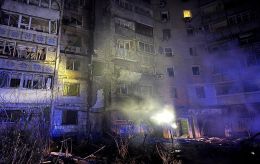Discover Rakhiv: Ukraine's little Alps with mountain charm and European soul
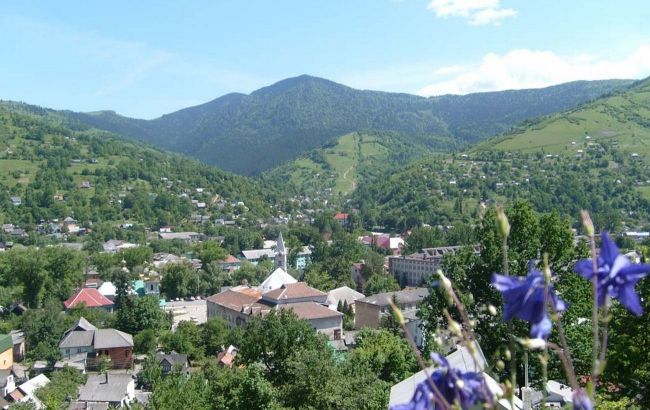 Magical Rakhiv with its narrow-gauge railway and European charm (photo: rakhiv-mr.gov.ua)
Magical Rakhiv with its narrow-gauge railway and European charm (photo: rakhiv-mr.gov.ua)
You don't need to travel abroad to see a real mountain narrow-gauge railway. You can find one in Rakhiv, which is the highest-altitude city in Ukraine, often called the Ukrainian "little Alps." What surprises does Rakhiv offer?
1895 train
Rakhiv is not only the Hutsul capital, but also a city where the spirit of the railway era is still alive. One of the most famous Carpathian narrow-gauge railways once stretched from here. It was used to transport timber and now attracts tourists who love romantic getaways in the mountains.
The first train departed from Rakhiv station in 1895. That's when the first railway section was opened, connecting the city with the Yasinya station. Later, trains began running to Budapest, Vienna, Prague, and Uzhhorod.
You'll find scenic panoramas, railway viaducts, wooden stations, and historical charm set against the Carpathian backdrop.
You can also experience a real thrill and witness the powerful torrents of the Tysa River.
And just 3 kilometers from Rakhiv, near the road sign for the village of Bohdan, lies something incredible. It is the confluence of the White and Black Tysa rivers, which form the channel of the Tysa River, the longest tributary of the Danube.
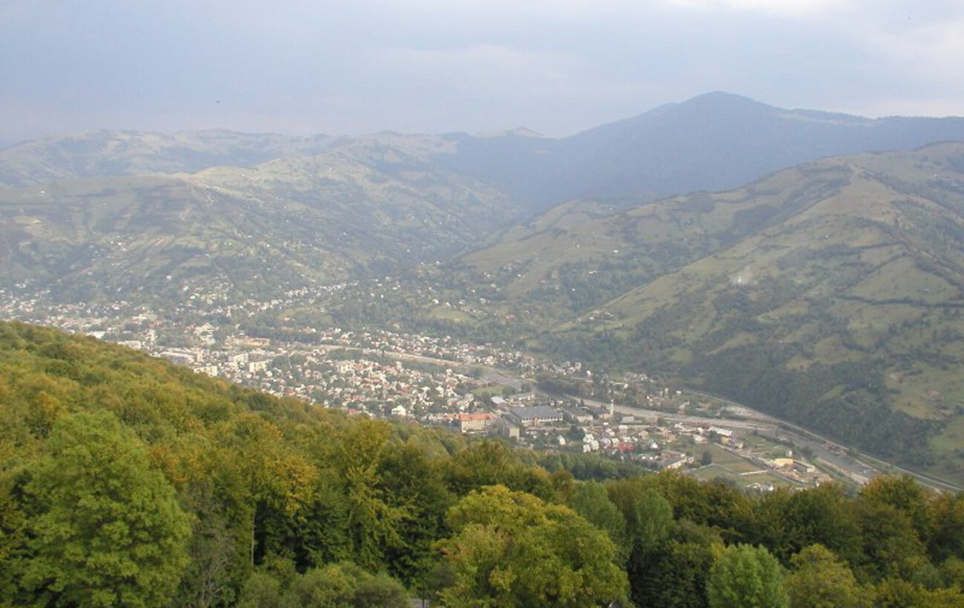 City view (photo: Wikipedia)
City view (photo: Wikipedia)
Vivid footage for any film
Amid steep Carpathian slopes, where Hutsul houses huddle close to the railway tracks, Rakhiv greets tourists like a living scene from a retro film.
Until recently, one of Ukraine's most famous narrow-gauge railways—the Carpathian (Borzhava) narrow-gauge line—was still operating here.
Although regular service has long been suspended, some railway branches remain and are used for excursions and photo tours.
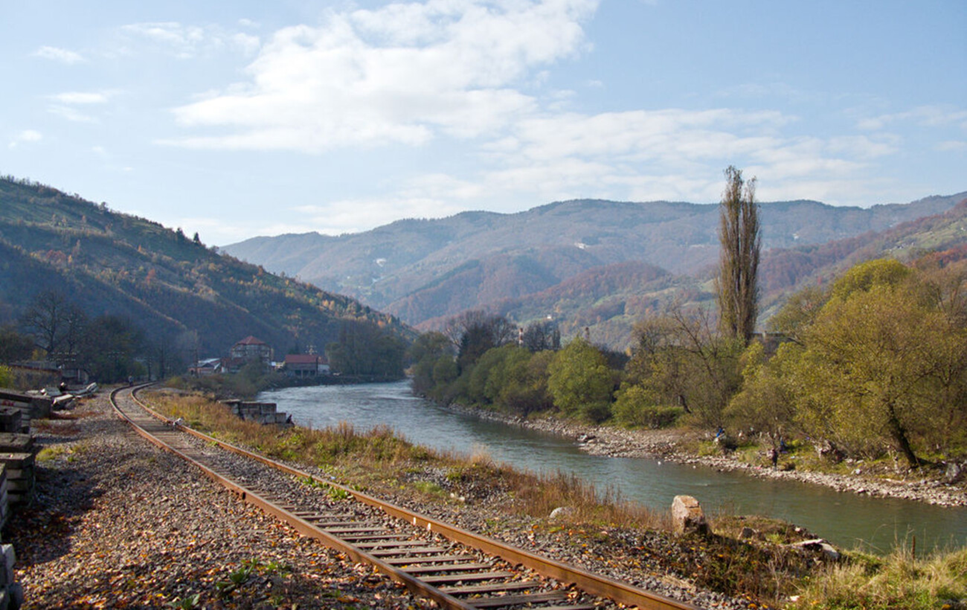 Railway track above the Tysa in Rakhiv (photo: Wikipedia)
Railway track above the Tysa in Rakhiv (photo: Wikipedia)
Near Rakhiv, in the villages of Kvasy, Bilyn, and Velyatyn, you can still see remnants of tracks, bridges, and platforms that once connected remote logging areas.
These tracks were originally used to transport timber, but locals also used them as regular public transport.
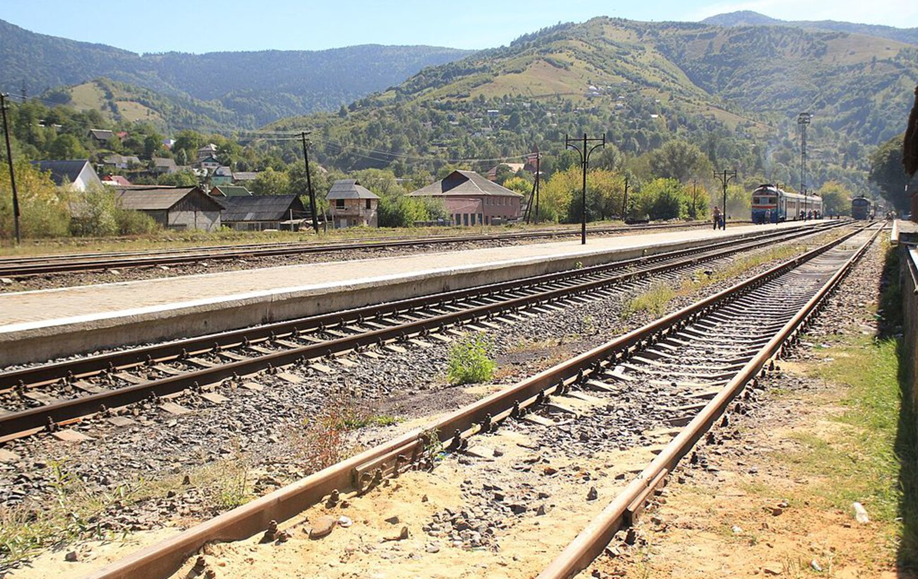 Mountain view from Rakhiv station (photo: Wikipedia)
Mountain view from Rakhiv station (photo: Wikipedia)
The atmosphere of Rakhiv combines Hutsul culture with Central European charm.
Buildings in the city center feature elements of Austrian architecture, while the train station resembles those found in Slovakia and the Czech Republic.
Altogether, it gives the impression that you're somewhere in the Tatra Mountains or in a Transcarpathian "ghost town" that has preserved its soul through all the upheavals of history.
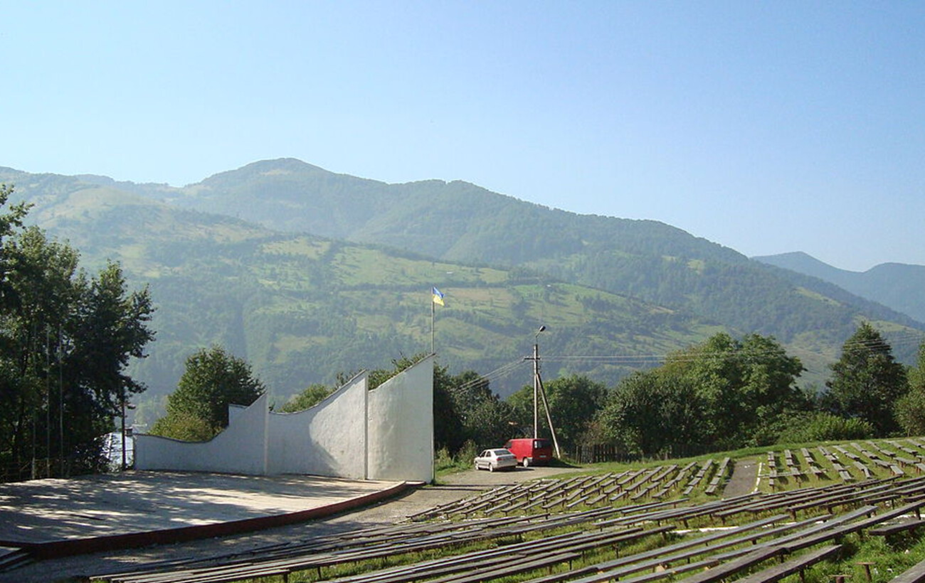 Amphitheater in Rakhiv (photo: Wikipedia)
Amphitheater in Rakhiv (photo: Wikipedia)
Should the narrow-gauge railway be restored?
Railway tunnels, wooden stations, and viaducts on steep slopes. Rakhiv is a reminder not only of past technical mastery but also of the potential for a tourism-filled future.
Local activists and travelers dream of restoring the narrow-gauge line as a historical route. If that happens, Rakhiv is sure to become a new highlight in tourist guides for "little Europe."
What else you absolutely must see in Rakhiv
- Church of Saint John of Nepomuk, built in 1782
- Monument to the Hutsul
- "Geographical Center of Europe" marker
- Hutsul Bryndza Museum (210 Shevchenko Street)
- Burkut Dendrological Park, home to the tallest specimen of European larch
- Taste water from a mountain spring (there are more than 15 in Rakhiv)
- Museum of Mountain Ecology
- Trufanets Waterfall
- Drahobrat Waterfall
 Geographical center of Europe (photo: rakhiv-mr.gov.ua)
Geographical center of Europe (photo: rakhiv-mr.gov.ua)
You may be interested in:
- Enchanting castles of Ukraine that aren't on souvenir magnets
- The smallest villages in Ukraine that are hard to find on the map
- What the Earth's largest waterfall looks like and how it affects the climate
Sources: Tourinform Zakarpattia, Wikipedia.

